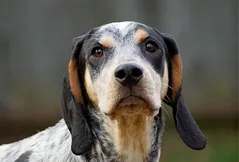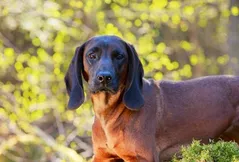
Borzoi
Borzoi is cherished for his calm, agreeable temperament. He is full of strength, grace, and glamour flying by at 35 to 40 miles per hour.
Overall Status
| Height | 26 to 28 inches or more at the shoulder |
| Temperament | Affectionate, Loyal, Regally Dignified |
| Weight | 55 to 120 pounds |
| Life Expectancy | 10 to 13 years |
| Coat Color | Black, Gray, Red, White |
| Barking Level | Infrequent |
Quick Factors
| Playfulness | |
| Dog Friendly | |
| Exercise Need | |
| Grooming Needs | |
| Strangers Friendly | |
| Family Affectionate |
Daily Care
Grooming Tips
The Borzoi’s long, silky coat can be flat, wavy or even a little curly. Although it looks glamorous, it’s not especially difficult to care for. It’s resistant to dirt and mud, which just drops off when the coat dries. Brush the coat weekly with a pin brush. Be sure to check for mats behind the ears and in the area where the legs meet the body. Bathe the Borzoi only as needed.Borzoi shed heavily. Regular brushing will help keep those hairs off your furniture, floors and clothing.The rest is basic care. Trim the nails every few weeks. Like most dogs, and sighthounds, in particular, Borzoi is sensitive about having their feet touched, so practice this early and often with a puppy. Keep the ears clean and dry to prevent bacterial or yeast infections from developing. Brush the teeth frequently for good overall health and fresh breath.
Exercise Tips
Even though Borzoi is large, they are graceful, athletic animals who make good house dogs.They do need daily exercise, whether in the form of long walks or running in a securely fenced yard.Being sighthounds, they are apt to chase anything that moves, so they should always be in an enclosed area or on a leash.It is never advisable to allow a Borzoi to run loose. Borzoi enjoys doing activities with their owners and excel in canine sports such as agility and lure coursing.
Feeding Tips
Be sure to feed your Borzoi a high-quality dog food that is made for large dogs. Give your dog a few small meals throughout the day instead of a large one as this breed is prone to bloat and torsion.
Health Tips
The proper amount of exercise is paramount when it comes to the Borzoi’s health. Under that thick coat is plenty of muscle, and to stay fit, your dog will need to get in enough daily activity.As well as running around outside, you’ll have to take your dog out for a walk, jog or run every day. Your dog will love to come along with you on a run, or will run beside you as you bike. The dog park is another great alternative, so it can meet and play with other dogs.Be sure that when you are outside of a fenced-in area, your Borzoi should always be on a leash. This breed likes to chase and hunt, so be sure to keep an eye on your dog if you let it off leash.
Trainability
The Borzoi can be difficult to train. Because it is a hound, its free spirit and one-track mind can get in the way of absorbing its training. However, this breed is intelligent and can be taught if you put in the time and effort it requires to be successful.While the breed is loyal to its families, Borzois aren’t as interested in pleasing its owner as it is to satisfy its own wants and needs. Training will be much more fruitful if you use positive training methods. You’ll have to build trust with your dog before you find that it will listen to your commands.You can either train your Borzoi at home or hire a trainer. The goal should be to find the most successful way that your dog works with you, rather than disciplining it because it isn’t doing what you want it to do.
History
The Borzoi, originally called the Russian Wolfhound, can be traced to 1650 Russia. The elegant, aristocratic dogs were bred by Russian nobles to hunt wolves. The dogs used to develop the Borzoi are thought to have been Russian bearhounds, coursing hounds from Tartary, and the Owtchar, a tall sheepdog. Another theory is that Arabian Greyhounds were crossed with heavy-coated Russian dogs.Until 1861, it was common for Russian nobles to stage hunting expeditions that were lavish spectacles, often with more than 100 dogs taking part, but by 1873 political and economic uncertainty meant that few Borzoi remained.Fortunately, some Borzoi had been exported to the United States prior to the revolution, in 1889. Other Borzoi were brought to the U.S. in the 1890s and the early 20thcentury. The American Kennel Club recognized the breed in 1891, and the name was changed from Russian Wolfhound to Borzoi in 1936. The Borzoi currently ranks 96thamong the breeds registered by the AKC, down from 87tha decade ago.






